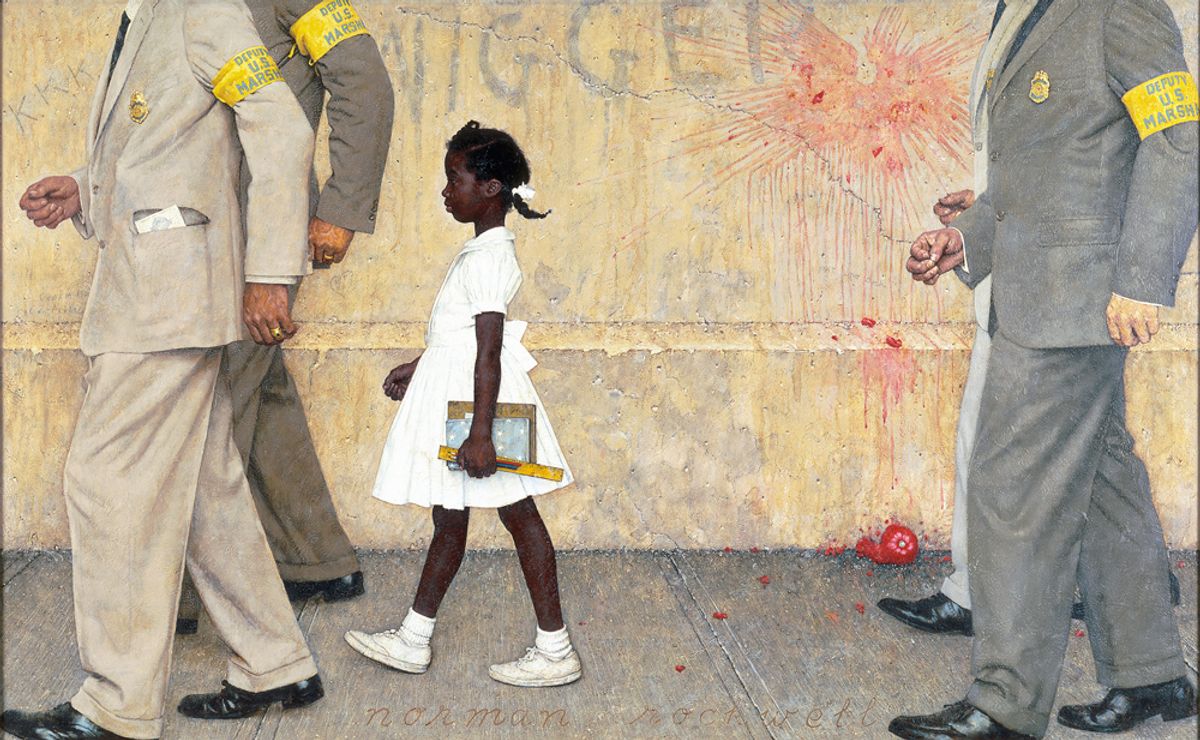Step into the historical context and urgency of Norman Rockwell’s 1943 Four Freedoms series—Freedom of Speech, Freedom of Worship, Freedom from Fear and Freedom from Want, outlined by president Franklin Delano Roosevelt in his 1941 State of the Union address—at the New-York Historical Society. The exhibition Rockwell, Roosevelt and the Four Freedoms (until 2 September), due to go on an international tour through 2020, is a rare opportunity to see these four paintings united, as well as historical documents, artefacts and other works by the US artist. You can even attend a town hall meeting like the one depicted in Freedom of Speech, or walk into the home from Freedom of Fear, through VR displays. The show goes beyond the Four Freedoms to look at other political works by Rockwell, including the shiver-inducing painting The Problem We All Live With (1963) of Ruby Bridges, the first African American child to attend the William Frantz Elementary in New Orleans during de-segregation, escorted by federal marshals as she walks bravely to school—a true American hero.
History Refused to Die at the Metropolitan Museum of Art (until 23 September), “add[s] new strands to our understanding of what makes American art uniquely American,” Brian Allen wrote in his review of the show, which celebrates the 2014 acquisition of 57 works from the Souls Grown Deep Foundation. A gorgeous selection of the pieces, by self-taught contemporary African-American artists from the south-east US, includes a massive double-sided assemblage by Thornton Dial (2004), which gave the show its name, made of materials like okra stalks and roots, clothing, collaged drawings, Masonite and steel chain. The artists, including Lonnie Holley, Nellie Mae Rowe and quilters from Gee’s Bend, Alabama, share a clever use of found or repurposed materials. Another standout work is a quilt by Loretta Pettway, Medallion (around 1960), a bold composition that frames a colourful blocking of verticals and horizontals into a black and white frame—“simple but totally brilliant”, says the co-curator Amelia Peck.
La Frontera: Encounters Along the Border (23 September) at the Museum of Arts and Design (MAD) uses jewellery to examine timely issues related to the US-Mexico border. The 48 artists work in various media, from handles of plastic water jugs (like the kinds left in the border desert by aid workers) in a necklace by Kevin Hughes, to the silver in Martha Vargas’s poetic necklace that links immigration to the annual monarch butterfly migration. La Frontera is based on a travelling exhibition that kicked off at the Museo Franz Mayer in Mexico City in 2013, updated to include new commissions that address the Trump administration’s stances and policies. “Unfortunately, while the initial planning stages took place during the presidential primaries, it remains as relevant (if not more so) today as it was then,” says MAD’s assistant curator Barbara Paris Gifford. “The show reminds us that unless you are Native American or came to this country literally in shackles, we are all immigrants to this country and we are all border people.”


